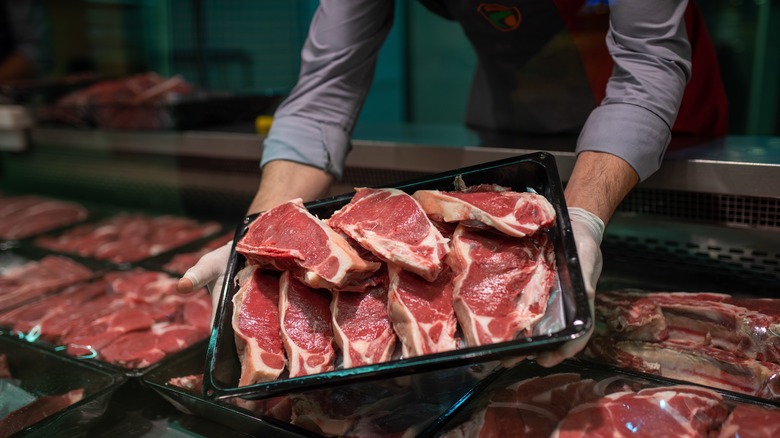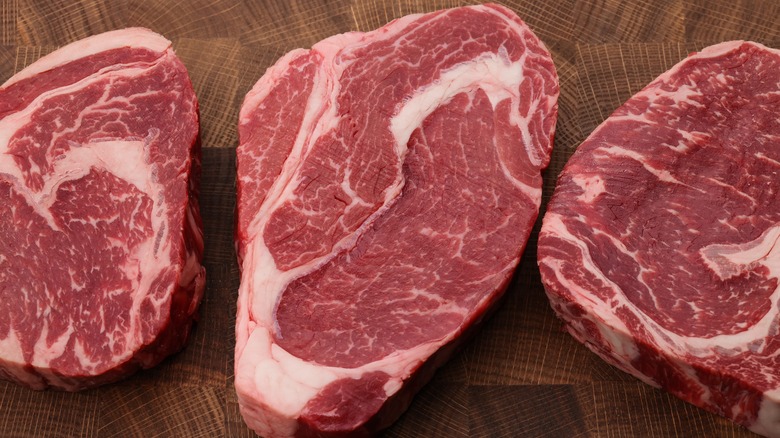What Is High Choice Beef?
If you've shopped for meat in the U.S., you've likely taken notice of the available top beef grades. Assessed by the USDA, high quality meat is delineated into prime, choice and select types. Producers apply to have their entire cows inspected by government workers, with a section of the ribs graded according to the resultant taste and texture.
The process seems straightforward enough, but it's not perfect. Especially in the choice category — the middle tier of marbling — there's a large amount of variety, with lower echelons containing half the fat. So that's where the term "high choice beef" comes in: It's the best third of the choice grade. Although not officially regulated by the USDA, coalitions of ranchers and other private brands have taken on delineating this quality meat type themselves.
High choice comes with lots of benefits. For the best cuts of steak, you're still getting incredibly good quality meat, all at a lower price point. In fact, with super fatty cuts like ribeye, the lesser marbling may even be advantageous, easing home cooking. Additionally, high choice beef is more accessible at both the grocery store and casual restaurants, meaning you can easily procure a cut for your cooking needs.
Private labeled high choice beef provides marbling just below prime
High choice beef is yet to become an industry standard, limited to certain beef packers. However, if you see a label with the term, it's likely to be trustworthy. USDA does outline choice beef into three subsections, but they don't publish the results. So high choice originated when distributors would hand select such better graded varieties from the packer. Nowadays, the movement's grown enough to establish its own USDA-backed certification. In fact, to uphold top quality, some steak companies only sell this upper tier of meat.
The quality of beef is rising across the U.S. — you can even pick up prime beef at Costco, after all. So the movement towards high choice is representative of such a trend. And since inspection only targets one part of the cow, such a sub-grade brings top quality beef into the spotlight. A steak of this quality won't disappoint, with your preparation method impacting more than the bump up to prime.
And don't forget that grading isn't mandatory — lots of producers choose to opt out of the program. USDA inspections focus overwhelmingly on marbling, which is typically a product of grain-fed cows. However, the flavor of grass-fed breeds may even be better. So a grass-fed, well-bred high choice could even be the tastiest option available.

